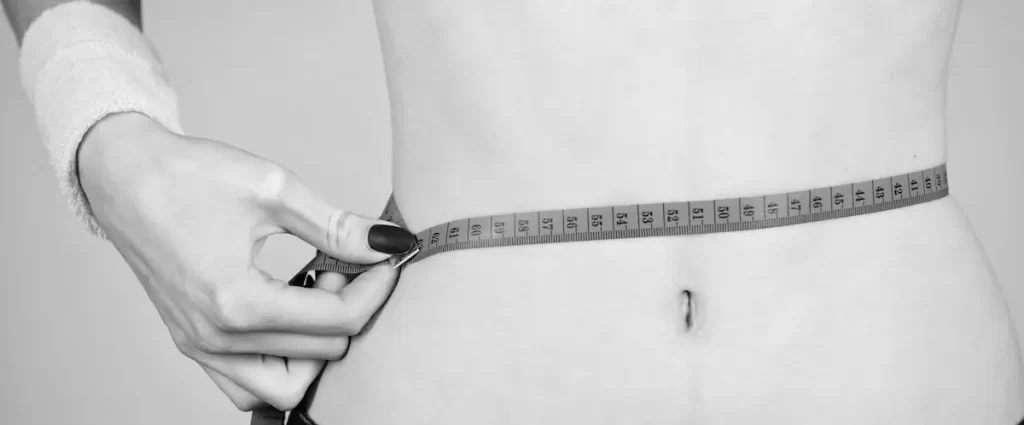Tight waist trainers promise an hourglass shape, but many wonder what happens when you take them off. These garments may temporarily slim your waist but come with risks like breathing problems and weakened muscles.
Thank you for reading this post, don't forget to subscribe!This blog breaks down their short-term effects, long-term dangers, and healthier alternatives. Keep reading to learn the facts before you cinch!
Key Takeaways
- Waist trainers give a short-term hourglass shape by compressing the midsection but do not burn fat or provide lasting results.
- Long-term use can harm organs, weaken core muscles, and reduce lung capacity by up to 60%, making breathing harder.
- Skin issues like rashes or infections may happen due to trapped heat and moisture under tight materials.
- Safer alternatives include core-strengthening exercises like planks, healthy eating habits, and regular cardio workouts.
- Experts advise against wearing waist trainers during exercise as they limit oxygen flow and strain internal organs.
What Waist Trainers Do
Waist trainers squeeze your midsection to give you an hourglass shape. They also push out water weight, making your waist look smaller for a short time.
Temporary body shaping
A waist trainer compresses the midsection, giving the appearance of a slimmer figure. This effect is temporary and fades as soon as you take it off. The garment pushes fat and skin into a more compact space, creating an hourglass shape for a short time.
Increased sweating may lead to water weight loss. Sweat makes the waist seem smaller temporarily but has no impact on actual fat loss or abdominal fat. Removing the trainer brings your body back to its natural shape—leading straight into perceived weight loss effects.
Perceived weight loss effects
Waist trainers can make you look slimmer by compressing your abdomen. This creates the illusion of weight loss but does not actually burn fat or reduce body fat. Most of what is lost while wearing one is water weight from sweating, which returns after rehydration.
They also do little to change fullness or appetite in the long term. Some people may feel tighter clothing tricks them into eating less, but this effect fades over time. Waist cinchers are not a substitute for real weight loss methods like strength training, a healthy diet, or regular exercise.
Immediate Effects of Uncinching a Waist Trainer
Taking off a waist trainer can feel like a breath of fresh air. The body adjusts quickly, but some changes may surprise you….
Relief from pressure
Uncinching a waist trainer brings immediate relief to your body. The strong compression eases, letting you breathe more freely and reducing tension. Many users feel less restricted, especially around the ribs and stomach.
If discomfort occurs during wear, this could mean the waist trainer is too tight.
Loosening the garment also improves blood flow that might have been limited by compression. This can prevent issues like numbness or tingling in areas like hips or thighs caused by nerve pressure (meralgia paresthetica).
Starting with one to two hours of daily use helps reduce strain gradually while avoiding long-term damage.

Temporary shape retention
Waist trainers give a quick hourglass shape by compressing the waist. This effect comes from squeezing soft tissues and redistributing water weight. The change only lasts while wearing the garment, as it doesn’t alter bones or fat permanently.
After removing the waist trainer, some temporary retention of the shape may occur for a few hours. Over time, your body will return to its natural form. Compression garments like these don’t reshape internal organs or provide long-term results without other methods like diet and exercise.
Long-term Risks of Waist Training
Wearing waist trainers for long periods can harm your body. It may lead to health issues that affect how organs and muscles work.
Organ compression and potential damage
Waist trainers put a lot of pressure on your midsection. This can push organs like the liver, kidneys, and intestines out of place. Over time, this shifting may affect how these organs work.
For example, it could cause digestive issues such as acid reflux or irritable bowel syndrome (IBS). In some cases, people experience numbness or tingling in their legs due to nerve compression, known as meralgia paresthetica.
The tight squeezing also reduces lung capacity. That makes breathing harder during activities like exercising or lifting weights. Prolonged use risks lasting damage to internal organs and muscles.
Compression garments worn too often might even weaken core strength over time—leaving you more prone to injuries in daily life.
Weakened core muscles
Relying on waist trainers can cause your abdominal muscles to weaken over time. This happens because the device does much of the work your core should do, like supporting posture and stabilizing movement.
Prolonged use may leave you with poor posture and back pain.
Weak core strength affects balance and increases injury risk during physical activity. For example, it could make tasks like lifting heavy objects or bending down harder—and even dangerous.
Instead of compressing with a garment, focus on resistance training or exercises like planks to build stronger muscles naturally.
Respiratory issues
Waist trainers can make breathing harder. Studies show they reduce lung capacity by 30% to 60%. Wearing them for long periods shrinks how much air you can take in, which may lead to difficulty breathing or even chronic issues.
A 2018 study found a drop in maximum voluntary ventilation (MVV) from 77.3 L/s to 68.8 L/s when wearing one. This means your lungs work less effectively during physical activity. Over time, this could affect oxygen levels and overall health.
Skin problems like rashes and infections
Tight waist trainers can trap heat and sweat. This often causes skin irritation or rashes, especially in warm areas of the midsection. Non-breathable materials make it harder for air to reach the skin, leading to discomfort and redness.
People with latex allergies face a higher risk. Tight compression garments may pinch the skin, causing painful marks or even minor infections if not cleaned properly. Yeast infections can also occur due to trapped moisture under these tight layers.

Alternatives to Waist Training
Strengthen your core, eat well, and stay active—simple choices can do wonders for long-term health. Keep reading to learn how!
Core strengthening exercises
Core exercises help build strength and stability. The bridge is a simple move to start with—lie on your back, bend knees, and lift hips. Do 10 reps, rest for 30-90 seconds, and repeat up to three sets.
Use a slow tempo of 3-1-3 (lift in three seconds, hold for one second, lower in three).
Another great option is the opposite arm and leg raise. Get on all fours, extend one arm forward while stretching the opposite leg back. Keep balance steady—complete 10 reps per side for up to three sets with similar rest times as above.
These moves target core muscles and enhance overall body control.
Healthy diet and regular exercise
Eating whole grains, vegetables, fruits, lean meats like fish or chicken, and nuts helps the body stay healthy. Avoid added sugars, trans fats, saturated fats, and too much salt to protect your digestive system and heart.
The CDC recommends focusing on foods that fuel energy while avoiding unhealthy choices such as processed snacks with trans fat or sugary drinks.
Exercise keeps core muscles strong and improves lung capacity. According to the AHA’s 2018 guidelines, aim for 150 minutes of cardio weekly. Strength training two days a week also builds muscle and supports an hourglass figure naturally—planks strengthen your waistline; squats tone hips! Regular physical activity lowers risks of organ damage from inactivity while helping you feel better daily.

FAQs About Waist Trainers
Do waist trainers really help with weight loss, and are they safe to wear daily? Find answers to these questions and more!
Can waist training permanently reduce waist size?
Waist training cannot permanently shrink your waist. It can create a temporary reduction of 1-3 inches if worn daily for at least 8 hours. This happens because the compression squeezes water weight and shifts tissues for a short time.
Over time, the body usually returns to its natural shape once you stop using the garment. Permanent waist changes require a healthy diet, consistent exercise like core strengthening exercises, or surgical solutions approved by experts such as the American Board of Cosmetic Surgery (ABCS).
Long-term dependence on waist trainers may lead to organ damage or weakened muscles instead of lasting results.
Is it safe to wear a waist trainer while exercising?
Wearing a waist trainer during exercise poses risks. It can weaken core muscles by relying on external compression for support. This may lead to less stability and strength over time.
Lung capacity can drop by 30% to 60%, reducing oxygen flow, which might cause dizziness or fatigue while working out.
The tight fit also compresses internal organs like the stomach and intestines. This pressure increases the chance of acid reflux or breathing issues. Experts, including the American Board of Cosmetic Surgery (ABCS), discourage wearing them for more than 8 hours—especially during physical activity.
Healthy alternatives like core strengthening exercises, such as bird dog exercise or planks, provide safer ways to improve body shape without risking harm.
Conclusion
Waist trainers might seem like a quick fix, but they come with risks. They squeeze your body and can harm your organs, muscles, and skin over time. Lasting changes need effort—healthy eating and core-strengthening exercises work better.
Think about safe alternatives for shaping your waist without hurting yourself. Your health matters most!
For more insights on healthy lifestyle choices, check out our article on why waiting for motivation might not be the best approach to achieving your goals.
